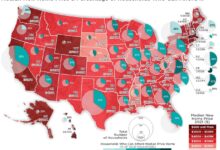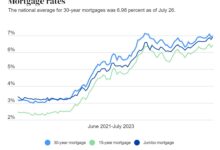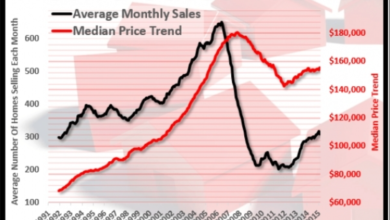Home Sales Statistics
Understanding Home Sales Statistics
In the dynamic landscape of real estate, home sales statistics serve as a crucial compass, guiding industry professionals, buyers, and sellers through the intricacies of the market. These statistics encompass a wealth of data, ranging from the number of properties sold to average sales prices and market trends. This article delves into the realm of home sales statistics, unraveling their significance and shedding light on how they offer valuable insights into the health and trends of the real estate market.
1. The Foundations of Understanding: Key Components of Home Sales Statistics
1.1 Transaction Volume and Market Activity
At the core of home sales statistics lies the transaction volume, providing a quantitative measure of the number of properties sold within a specific timeframe. This metric serves as a fundamental indicator of market activity, reflecting the level of demand and engagement within a given real estate market. A high transaction volume often suggests a vibrant and competitive market, where buyers and sellers actively participate in property transactions. Conversely, a lower transaction volume may indicate a more subdued market, prompting stakeholders to assess the factors contributing to the level of activity and strategize accordingly.
1.2 Average Sales Prices and Pricing Trends
Another key component of home sales statistics is the average sales price, representing the mean value of properties sold during a defined period. Analyzing average sales prices provides valuable insights into pricing trends, helping both buyers and sellers gauge the overall health and competitiveness of the market. Fluctuations in average sales prices may indicate shifts in demand, changes in property values, or the impact of external factors such as economic conditions. Understanding these trends enables stakeholders to make informed decisions related to property transactions, pricing strategies, and market positioning.
2. Navigating Market Dynamics: Insights from Home Sales Statistics
2.1 Regional Variations and Micro-Market Analysis
One of the nuances within home sales statistics lies in regional variations and micro-market analysis. Real estate markets can exhibit significant disparities even within a single city or metropolitan area. Examining home sales statistics at a regional or neighborhood level provides a more granular understanding of market dynamics. Stakeholders can identify pockets of high demand, areas experiencing rapid growth, or neighborhoods where specific property features drive pricing trends. This level of detail is invaluable for both buyers and sellers, enabling them to align their strategies with the unique characteristics of specific markets.
2.2 Seasonal Trends and Timing Considerations
Home sales statistics often reveal distinct seasonal trends, influencing the timing of property transactions. Understanding when market activity typically peaks or slows down can inform decision-making for both buyers and sellers. For example, the spring and summer months may witness increased demand, while the winter months may experience a slowdown. Recognizing these patterns allows sellers to strategically time property listings for maximum visibility, while buyers can leverage seasonal fluctuations to optimize their purchasing power. The incorporation of timing considerations based on home sales statistics adds a strategic layer to navigating the real estate market efficiently.
2.3 Market Stability and Forecasting
Stability within the real estate market is a critical consideration for all stakeholders. Home sales statistics contribute to assessing the overall stability of a market by highlighting trends in transaction volume, pricing, and other key metrics. Analyzing these statistics over time allows for the identification of patterns and potential indicators of market shifts. Whether it’s predicting the potential for a buyer’s or seller’s market, anticipating pricing trends, or gauging the impact of economic factors, home sales statistics serve as a compass for market forecasting. This foresight empowers individuals to make proactive and well-informed decisions in the ever-evolving real estate landscape.
In conclusion, home sales statistics are an invaluable tool for anyone involved in the real estate industry. By comprehensively understanding transaction volume, average sales prices, regional variations, and seasonal trends, stakeholders can navigate the market with strategic precision. These statistics not only offer a snapshot of current market conditions but also provide insights into the factors driving trends and shaping the future of the real estate landscape. As the industry continues to evolve, leveraging the information embedded in home sales statistics becomes an essential element in making informed and strategic decisions in the dynamic world of real estate.









